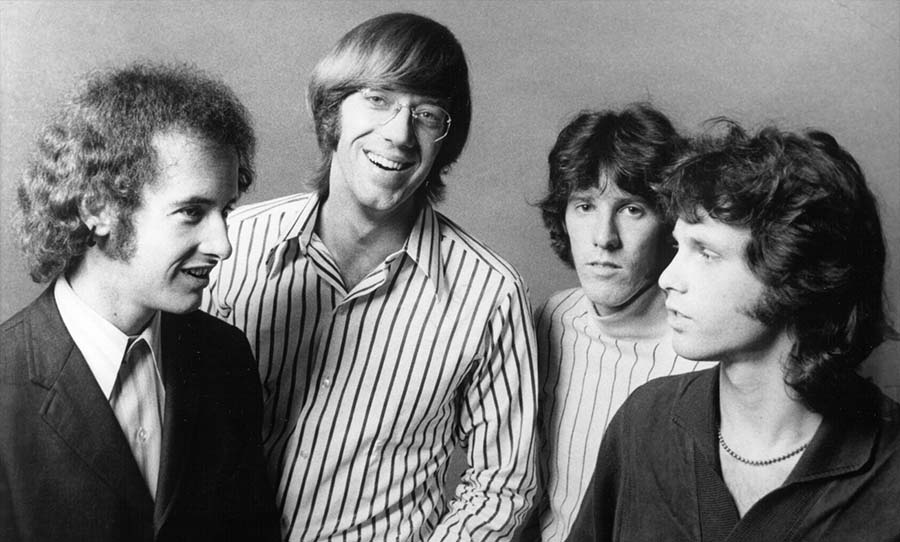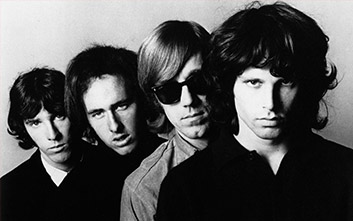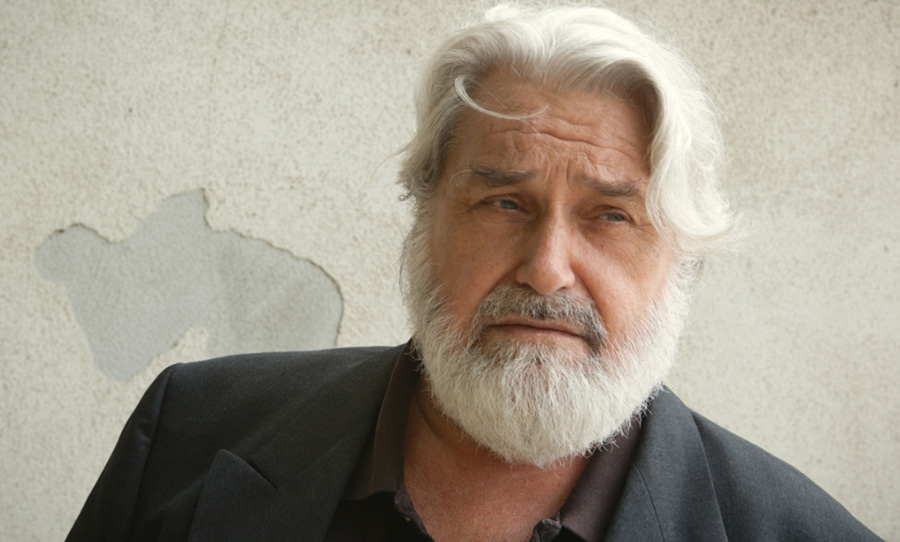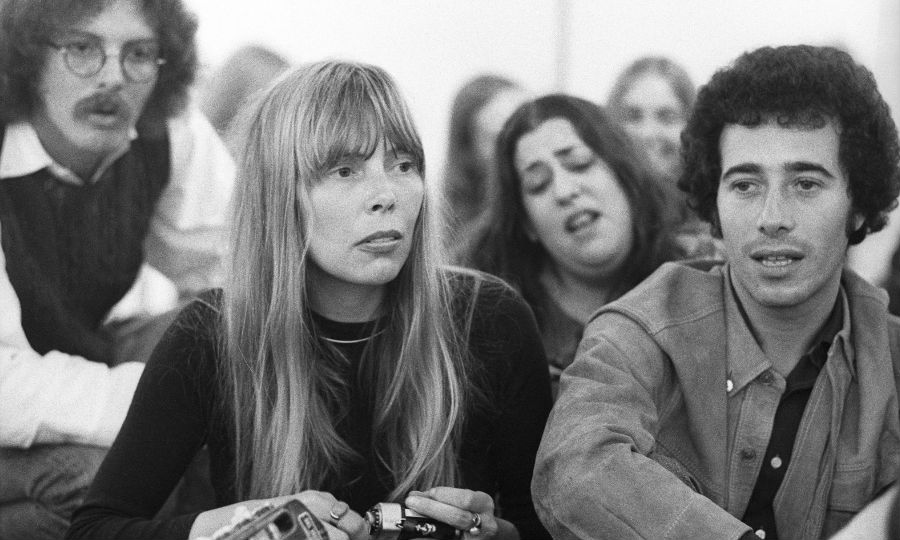The Doors’ influence in the rock and roll canon has been immeasurable.
In the fifty years since the idealistic, drug addled ‘Summer of Love’, the southern California band has gone on to influence such musicians as Ian Curtis of Joy Division, Scott Weiland of Stone Temple Pilots, Iggy Pop, and Patti Smith, among countless others; the band’s eponymous debut is regularly featured in ‘best album of all time’ listicles.
Here we break down the elements that made that 1967 album one of the greatest and most influential rock records of all time.
We break down the elements that made the Doors’ eponymous 1967 debut one of the greatest and most influential rock records of all time.
The Band: A Chorus of Iconic Sounds
After the band’s formation in 1965 (and extensive rehearsals and performances at clubs around Los Angeles in ’66), by January 1967, The Doors’ first album was released. Recorded at Sunset Sound Studios in L.A, the sessions were engineered by Bruce Botnick, with production assistance from Paul A. Rothchild.
As for the music itself, keyboardist Ray Manzarek is popularly thought of as being the main contributor to the Doors’ sonic voice, second only to Jim Morrison. Manzarek’s keyboards of choice were a Vox Continental for rhythm, played with his left hand, and a Fender Rhodes bass as a stand-in for a bass player, controlled by his right.
The bright, sparkly tones of the Continental shine on tracks such as Alabama Song (Whisky Bar), whereas the lower register of the Rhodes pummels through on tracks like opening track Break on Through (To The Other Side) – both archetypal sounds in their own right. The band’s rhythm section was also supported by drummer John Densmore and his Ludwig kit.
A defining element of Densmore’s drumming was his use of brushes and techniques which were borrowed from Brazilian bossa nova, which you can hear displayed beautifully on the album opener. As for Robby Krieger, the band’s guitarist, his musical contributions were formed by a 1964 Gibson SG with two P90 single-coil pickups and Vibrola tremolo system running in to a Fender Twin Reverb. He was also partial to using a bottleneck slide (as legend tells it, Morrison heard Krieger using a slide at an early rehearsal and instantly wanted it to feature on every song on the album).
As for Morrison himself, being a fan of Frank Sinatra, his weapon of choice during the sessions was a Telefunken/Neumann U47. Initially produced from 1949-1965, the tube condenser exhibits a wide and true frequency response, which proved to be perfect for capturing Morrison’s entire personality – the moody, manic shaman – throughout the entire recording.
The Studio: Recording at Sunset Sounds
L.A’s Sunset Sound Studios was initially established in an old mechanics workshop on Sunset Boulevard in 1962, and was the place where the majority of The Doors’ records were created. Studio 1, the only studio at the time (more were added in the late 60s and 1970s), was adapted from the building’s former life as a car workshop with interesting features such as a sloping floor and irregular walls.
This industrial environment imbued a dry, lively quality to the recordings, especially in the case of the drums on tracks like Soul Kitchen.
“The back wall was all brick, the floor was asphalt tile”, engineer Bruce Botnick remembered. “There was this glass window, and there were three ALTEC LANSING 604E speakers hanging above that…” Aside from the speakers, the studio featured a custom-made valve-powered analogue console with 14 inputs, and provisions for API 550A three channel equalisers for each individual channel.
While the consoles were designed from scratch, the tape machines used for the recording process were a different story. The album was tracked to two 3-track machines, an Ampex 200 and 300. These tape machines, built in late 1940s, had separate heads for recording, erase and playback.
On top of this three-head design, the 300 was also modified to accept an extra track and overdubs. “They had a thing back then called A.M.E.,” Botnick recalled to The Tracking Angle, “which was Ampex Master Equalisation, and then they had N.A.B. (a form of tape specification), so if you recorded A.M.E. and played it back N.A.B., it would come out brighter. It’s like recording with Dolby and not decoding…”
Another interesting feature of the early Sunset Sound was its (now) famous echo chamber. Constructed off to the side of the main studio, the room has a distinctive character, along with a touch of plate reverb, was utilised rather liberally to treat Morrison’s vocals.
The studio was also one of the first to include a dedicated soundproofed booth just for vocals. This room became especially useful when it came to recording infamous album closer, The End. Making use of the three tracks available to Paul A. Rothchild, bass and drums were recorded on one track, guitar and organ another, while the third was purely for Morrison’s vocals. When it came time to track it, the studio’s lights were dimmed, and the recording began. Rothchild remembers the occasion:
“It was a magic moment when Jim was doing The End, doing it for all time, and I was pulled off, right on down his road…for one of the few times in rock’n’roll history, sheer drama had taken place on tape…Bruce was also completely sucked into it…”.
Live and Mono
The technical limitations were as such that the album was recorded completely live. Ray Manzarek described the recordings as “The Doors live, but instead of a stage, it was in a recording studio”. The entire album was recorded in mono too, which Botnick claims was done for practical reasons:
“AM radio was mono, and 95% of the homes in America had mono phonographs…in three-track, the thought wasn’t for making stereo records, it was for splitting up the elements for later mixing…You made a live mix in those days. You made those decisions live; it was normal.”
When it came to mixing the album (leaving aside the fact that it was originally recorded in mono), the console was particularly barren, as it operated without onboard EQ, unlike many of the large format desks that superseded it. Reminiscing about the sessions for Strange Days, the sophomore album which followed eight months later, Botnick describes the rough-and-ready aesthetic of recording at Sunset Sound:
“There was no onboard EQ, everything was plugged in; banks of Pultec and Langevin equalisers, Fairchild equalisers, Fairchild limiters, Universal Audio tube limiters, things like that… At that time I had maybe six Pultecs, as well as a bunch of Langevins, which had a huge insertion loss of 17Db.”
Ongoing Legacy
With the success of their debut record and it’s unforgettable single, Light My Fire, The Doors firmly implanted themselves into the pantheon of rock history, going on to be inducted into the Rock and Roll Hall of Fame in 1993. The Doors is a clear indication that – despite the technical challenges, the use of already dated equipment and the constraints of music consumption at the time – musical alchemy can be created from engineering wizardry, transcendent songs, and nothing more.



